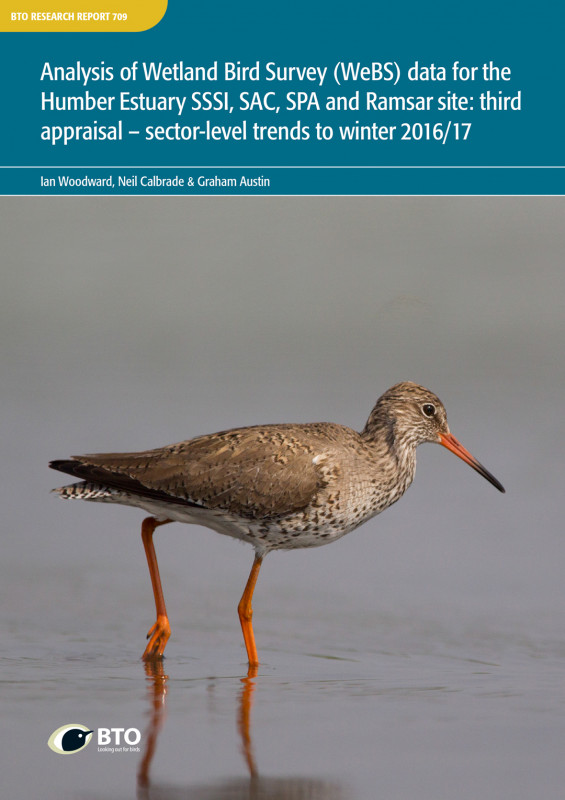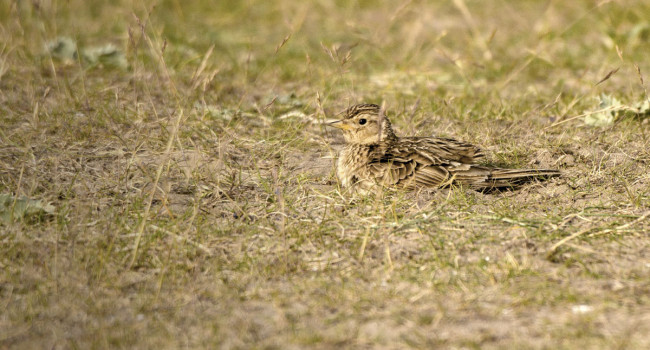Analysis of Wetland Bird Survey (WeBS) Data for The Humber Estuary SSSI, SAC, SPA and Ramsar site: Third appraisal - sector-level trends to winter 2016/17
Author(s): Woodward, I.D., Calbrade, N.A. & Austin, G.E.
Published: November 2018 Issue No.: 709 Pages: 268pp
ISBN: 978-1-912642-09-0
Download article 7.71 MB application/pdf
Abstract
1. The Humber Estuary is a site of national and international importance for its wader and wildfowlpopulations, supporting approximately 134,000 waterbirds during the winter and passageperiods (Frost et al. 2018). It has been designated as a Special Protection Area (the HumberEstuary SPA) for many waterbird species.
2. The Wetland Bird Survey (WeBS) is a long-running survey recording numbers of all waterbirdspecies, monthly, on sites throughout the UK. This includes counts collected for some 40 countsectors which together cover the Humber Estuary. These data can be used to assess population trends in different parts of the Humber Estuary.
3. This study aimed to update the previous reports (Austin et al. 2008; Ross-Smith et al. 2013) thatassessed population trends of waterbird species in different parts of the Humber Estuary, in order to identify areas where species were declining contrary to, or in excess of, the trend for the Humber Estuary as a whole and, furthermore, to identify sectors that support an increasing proportion of species that are declining across the Humber Estuary as a whole.
4. Smoothed population trends were generated using data from the period 2000/01 to 2016/17, and assessed for the most recent winter period for each of the 36 waterbird species specified byNatural England. For 28 species there were sufficient data on at least some sectors to assesssector trends, relative importance in relation to the whole Humber Estuary population and whether the proportion of the entire Humber Estuary population supported by each sector had increased or decreased significantly.
5. In contrast to the general declines described by Austin et al. (2008) and Ross-Smith et al. (2013), populations of most wader species have shown short-term increases across the Humber Estuary as a whole, and in particular on the middle and outer parts of the southern shore of the Humber Estuary, reversing or partially reversing the declines in these areas noted in the previous reports. However, recent declines have occurred across almost all sectors on the northern shore, and in many sectors within the inner part of the southern shore.
6. Population trends of other waterbird species were variable. There were mixed results amongst dabbling ducks but decreases for all three diving ducks for which trends could be produced, and increases for all geese species and for Little Egret.
7. Continuing the pattern described by the previous Humber reports, many of these population changes found in this report were in line with regional trends. However, the Humber had decreased in importance in terms of the proportion of the region’s species held for Knot and Bar-tailed Godwit, and slightly for Shelduck and Curlew, indicating factors affecting Humber populations that are absent or less severe more widely in eastern England. In contrast, the proportion supported has recently increased for Oystercatcher, Ringed Plover (slightly) and Grey Plover, in all cases reversing or partially reversing previous decreases and suggesting that factorson the Humber which previously affected these three species on the Humber may have since improved.









Share this page